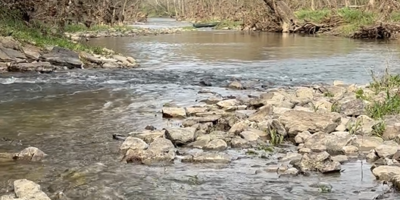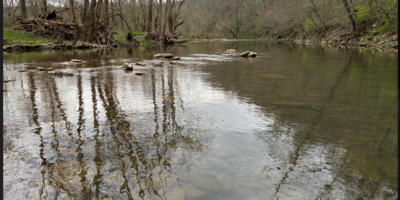By David Shattuck
The proposed Rupp Arena Opportunity Zone presents an opportunity to revisit an issue dear to developers: the closure of the Vine Street curve to extend Triangle Park across Vine Street to connect directly with the Civic Center. This idea was first floated in 2000; that same year Third and Fourth Streets were converted from one-way to two-way traffic. During the summer of 2001, the Urban County Council voted 13-2 to close the Vine Street curve and to make certain one-way streets two-way, an action which Lexington businessman Warren Rosenthal called “very, very stupid.” An outcry over the vote led the Council to hear public comments on the proposal at its next scheduled meeting. About 50 citizens, myself included, showed up to speak against the proposal. Prior to the meeting, however, as we gathered in the hallway, it was announced that the Council intended to reverse its vote. It was our understanding that this was done in order to determine whether a traffic study would support the plan. [I’ve added the clause to make it fit with the term “It was OUR understanding…”]
It wasn’t until 2009, however, in response to an open records request, that I discovered that a traffic study had been conducted back in December 2000. This study, captioned “Closure of the Vine Street Yoke Traffic Analysis,” was prepared by the same firm, Entran, that would later conduct the Lexington Traffic Study in 2007 that failed to support the recommendation that downtown’s one-way streets be converted to two-way traffic. Like its later cousin, the 2000 Vine Street Yoke study demonstrates persuasively that closure of Vine at the curve would result in unacceptable peak-hour traffic congestion.
Vine Street Yoke
The 2000 study analyzed five scenarios involving removal of the yoke and various combinations of two-way street conversions. Significantly, in each scenario Short is retained as a one-way street (though now Short and Second are the first streets planners aim to convert) in order to accommodate eastbound traffic. The Study explains that “approximately 15,500 vehicles per day are currently using the Vine St. Yoke. This section of Vine St. is one of the heaviest traveled streets within the downtown network. The Vine St. Yoke currently consists of four through lanes. Vine St. serves as the major eastbound street within the downtown system, carrying vehicles from Newtown Pike and Leestown Rd. into the downtown.”
The study continues: “When the Vine St. Yoke is closed, there are two important questions that need to be answered: (1) Where do the 15,500 vehicles now using the Yoke redistribute to, and (2) What are the impacts of that redistribution?” The study notes that “70% of the traffic that is using the Vine St. Yoke is currently destined to locations south of Main St. The remaining 30% is destined to areas such as Midland and East Main Street.” The study notes that “[t]raditionally, traffic volumes have increased 0.5% to 1% per year within the downtown area.”
Five options and an addendum
Scenario 1, which removes the Yoke and makes Main Street two-way to Broadway, redistributes 7,000 vehicles daily to Short Street, and results in a 40% increase in the time needed to travel down Main from Rose to Broadway. Option 2 takes Scenario 1 and also reverses the direction of High and Maxwell, which “did not provide a significant decrease in delay on Main St. when compared with Option 1.”
Option 3 is the most interesting of all the scenarios studied, because it takes Option 2 and further assumes completion of Newtown Pike to Versailles Road, a project that has only recently been completed. As I wrote in Business Lexington in spring of 2007, the Newtown extension is unlikely to play a significant role in reducing congestion on Main/Vine and Maxwell/High that would ensue with two-way traffic, since these pairs run in an east-west direction while Newtown runs north/south. The Yoke Analysis predicted as much: even reversing the direction of High and Maxwell, extending Newtown to Maxwell results in the same overall delay on Main Street as Option 2—35%. Indeed, careful observers should know by now that extension of Newtown has had no material impact on downtown traffic.
Scenario 4 removes the Yoke, two-ways Main to Broadway, reverses the direction of High Street, converts Vine and Maxwell to two-way traffic, and assumes an extension of Newtown Pike to Limestone. While the model predicts that this option results in unacceptable congestion only on Maxwell Street (a prediction that I dispute for a variety of reasons), the study cautions: “It is important to note that Newtown Pike Extended has not yet entered the preliminary engineering and environmental investigation phase. The construction of Newtown Pike to Limestone is still a minimum of 8 years from completion.”
Option 5 removes the Yoke, two-ways Main to Broadway, converts High and Maxwell to two-way traffic, and allows for a left turn from southbound Broadway onto Vine Street. The model makes two significant predictions under this scenario. First, traffic volume on Vine remains at the same volume prior to removal of the Yoke—10,000 vehicles daily. “The 10,000 vehicles turning left create a tremendous strain on the Vine St. and Broadway intersection as well as the intersections at Broadway and High St. and Broadway and Main Street.” Second, the conversion of High and Maxwell to two-way traffic results in unacceptable traffic congestion.
The Yoke Analysis concludes that under each scenario except option 4—where Newtown is extended all the way to Limestone—“it becomes apparent that there does need to be a direct connection to Vine St. for eastbound traffic.” Accordingly, the Analysis contains an Addendum dated February 2001 which analyzes Option 6—remove the Yoke, make Main two-way to Upper Street, and make Vine two-way to between Broadway and Limestone.
The study explains that if Main Street is converted to two-way between Broadway and Upper, then Vine must also be converted to two-way to Limestone in order to help ease congestion on Main. Under this scenario Vine still carries approximately 80% of its original volume eastbound to Limestone, or some 8,000 vehicles (as measured in the year 2000). The model predicts that this option “will not improve traffic flow in downtown, however it will function.” In order to function, though, “several left turn limitations will need to be imposed on Main Street.” In addition, converting Main to two-way traffic “will require the removal of some curb and other construction.”
Drawing conclusions
What is the upshot of all of this? Obviously, the 2000 Yoke Analysis deals a devastating blow to any plans to close the Vine Street curve in order to extend Triangle Park to the Civic Center. Whatever merit the idea may have in terms of making the park more attractive, allowing for sidewalk cafes and retail opportunities, the simple fact is that our spoke/wheel traffic infrastructure will not accommodate it. No wonder, then, that the developers chose to retreat when those 50-some citizens appeared at a council meeting to oppose closure of the Vine Street curve. And no wonder the Council reversed its initial 13-2 vote to close Vine at the yoke.
More important, though, the Yoke Analysis, and particularly its February 2001 Addendum, underscores the lengths to which developers and planners have gone in promoting, against the weight of evidence, downtown street conversion. Recall that the December 2000 Analysis, Scenario 3, concludes that extending Newtown to Versailles Road has no material impact on downtown congestion. Yet just two months later, the Addendum concludes that the extension “will help some of the congestion created by the closure of the Vine Street Yoke and the conversion of Main Street to two-way.”
Nowhere is the bias in favor of conversion more apparent than in the example of Maxwell Street. The 2000 Yoke Analysis concludes that conversion of Maxwell isn’t feasible, as does the $100,000 2007 Entran Traffic Study. The Downtown Streetscape Plan, released in summer 2008, cites the Traffic Study to conclude that conversion of Main and Vine would result in traffic congestion that the Kentucky Transportation Cabinet would find unacceptable.
In the very next paragraph, however, the Plan completely ignores the findings of both the 2000 and 2007 studies which demonstrate that Maxwell is the least suitable for conversion of all the streets: “Discussions with the plan’s transportation consultants, Transportation Cabinet Representatives, Metropolitan Planning Organization (MPO) and LFUCG staff have indicated and [sic] that the conversion of Limestone and Upper and High and Maxwell could also be achieved assuming that council supported the strategy, funding was available, and that a comprehensive engineering approach was utilized for each successive conversion.” In response to an open records request for all documents which might support this assertion, LFUCG produced a single one: the 2007 Traffic Study, which, of course, reached the precise opposite conclusion regarding Maxwell Street!
Earlier this year, LFUCG awarded $450,000, obtained from federal stimulus dollars, to Entran—the same entity that conducted the 2000 and 2007 studies demonstrating conversion is not feasible—to design plans for reconfiguring all of downtown’s one-way streets to two-way traffic. As I wrote numerous council members upon learning of this, “I find it remarkable that, with respect to Maxwell Street, we’re paying to configure a bridge to nowhere. The 2007 traffic study concluded that conversion of Maxwell is a non-starter; it simply isn’t feasible under any scenario. So I cannot fathom how it’s proper for us to use federal stimulus dollars to configure Maxwell for 2-way traffic.” As regards the other streets, I wrote: “We’re paying a consultant to configure plans which never had any hope of working in the first place.”
It is highly ironic, of course, that the same entity that in 2000 and 2007 concluded that conversion isn’t feasible will now be paid to make it happen anyway!




1 Pingback